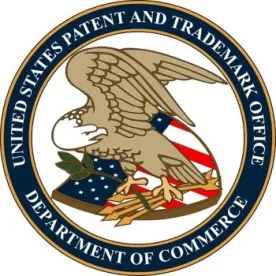Yesterday, in Arthrex, Inc. v. Smith & Nephew, Inc., No. 2018-2140 (Fed. Cir. Oct. 31, 2019), a three judge panel of the Federal Circuit determined that the appointment of Administrative Patent Judges who hear inter partes review proceedings at the United States Patent and Trademark Office (“USPTO”) violated the Appointments Clause of the U.S. Constitution, Art. II, § 2, cl. 2. Instead of declaring the entire statutory scheme establishing inter partes review unconstitutional, the Court found as unconstitutional one provision of the patent statute directed to preventing Administrative Patent Judges (APJs) from being removed without cause by the Director of the USPTO, and severed and nullified it so as to preserve the remainder of the statute authorizing USPTO inter partes review. Because the decision before the Court was rendered by a panel of Administrative Patent Judges operating under the statute before the severance, the Court vacated and remanded the case to the USPTO Patent Trial and Appeal Board with the instruction that a different panel of Administrative Patent Judges reconsider the merits.
Constitutional Infirmity of Patent Trial and Appeal Board
The inter partes review of the patent at issue in this case was before a three-judge panel of USPTO Administrative Patent Judges, who, after instituting review, and after briefing and trial, found the claims unpatentable as lacking novelty in view of a prior art reference. Although patent owner Arthrex did not raise the constitutionality issue before the APJ panel, the Federal Circuit recognized it had discretion to consider the issue on appeal because of, among other things, the constitutional question involved.
The Appointments Clause of Article II states that “[The President] ... shall nominate, and by and with the Advice and Consent of the Senate, shall appoint … Judges of the supreme Court, and all other Officers of the United States, whose Appointments are not herein otherwise provided for, and which shall be established by Law: but the Congress may by Law vest the Appointment of such inferior Officers, as they think proper, in the President alone, in the Courts of Law, or in the Heads of Departments.” U.S. Const. art. II, § 2, cl. 2.
The Federal Circuit recognized that the APJs who decided the case were appointed by the U.S. Secretary of Commerce, in consultation with the Director of the USPTO, in accordance with the Patent Statute. 35 U.S.C. § 6(a). However, for the statutory scheme to pass constitutional muster, the Federal Circuit identified the issue for the APJs, who are clearly “Officers of the United States” under the Appointments Clause, as whether they are either (1) “inferior officers” under the Constitution, and therefore do not require appointment by the President (and can be appointed by the Secretary of Commerce) or (2) “principal officers” who do require appointment by the President. Slip Op. 6-7.
In determining whether the APJs were inferior officers or principal officers, the Federal Circuit looked to Supreme Court authority that established a three-factor test based on an analysis of the APJs’ powers, oversight of APJs by a Senate appointed official, and an appointed official’s power to remove them. Under the statutory framework creating the Board and the USPTO inter partes review procedure, the Court recognized there is no presidentially-appointed officer who has sole authority to change, vacate or nullify a final written decision because the statute requires all decisions to be rendered by a three-member panel, and with a majority of the panel being APJs, all decisions are controlled by APJs and so they are like principal officers under the first factor. Id. at 9-12. As for the second factor, the Court recognized the presidentially-appointed USPTO Director has broad policy-direction and supervisory authority over APJs, and thus this factor suggested APJs are like inferior officers. Id. at 13-14. However, as for the third factor, the Patent Statute did not provide the presidentially-appointed Secretary of Commerce and USPTO Director with unfettered authority to remove APJs from the Board because the Patent Statute provides APJs with assurances that they can be removed only for “such cause as will promote the efficiency” of the USPTO. Id. at 16 (citing 35 USC § 3(c); 5 USC § 7513(a)). Thus, under the third factor, APJs are like principal officers. Id. at 17-19. Accordingly, the Federal Circuit concluded that under the Patent Statute as presently written, APJs are considered principal officers, and as such, the Appointments Clause of the Constitution requires that they be appointed by the President of the United States and confirmed by the Senate. Because the APJs had not been, the Court concluded the Board violated this Clause. Id. at 20.
Federal Circuit Remedies Constitutional Infirmity
After identifying the unconstitutional nature of the APJ appointment scheme, the Federal Circuit recognized its obligation to nullify as unconstitutional only so much of the Patent Statute as necessary to solve the constitutionality problem, and thereby leave the remainder of the statute intact so long as the remainder is constitutional, capable of functioning, and consistent with Congress’ objectives in enacting the statute. To this end, the Federal Circuit identified the provision in the Patent Statute requiring that APJs can only be removed for cause under 35 USC § 3(c) as not constitutionally applied, and under accepted Supreme Court and other appellate court case authority, severed this provision from the statute, and invalidated it as unconstitutional. Id. at 23-24.
With this modification, the Federal Circuit preserved the remainder of the inter partes review statutory scheme, id. at 25, observing: “It is our view that Congress intended for the inter partes review system to function to review issued patents and that it would have preferred a Board whose members are removable at will rather than no Board at all.”
As for the parties to the appeal, the Federal Circuit vacated and remanded the inter partes review decision to the Board because the panel of APJs who had made the decision were not constitutionally appointed at the time of the decision. Id. at 27. Although the Court recognized that the Board may decide the matter on remand based on the current record, or in its discretion allow additional briefing or reopen the record, the Court directed that a new panel of APJs hear the matter on remand so as to cure the constitutional error presented. Id. at 29-30.
Key Takeaways From Arthrex Decision
The Federal Circuit panel went out of its way to try to corral the effects of its unconstitutionality decision, stating “[W]e see the impact of this case as limited to those cases where final written decisions were issued and where litigants present an Appointments Clause challenge on appeal.” Id. at 29. Accordingly, under this narrow view of the impact of Arthrex, litigants appealing a final written decision to the Federal Circuit who would like to reargue the merits to a different panel of APJs at the USPTO Board can raise an Appointments Clause challenge on appeal.
As for litigants who have let the time to appeal an adverse inter partes review decision expire, or who have obtained a decision on appeal, the Federal Circuit panel in Arthrex appeared to signal an uphill battle to attempt to overturn such past decisions, observing that an Appointments Clause constitutional challenge is a nonjurisdictional and structural constitutional objection that is waived if not timely presented. Id.
As for litigants currently before the USPTO Board who have not received a final written decision, the Federal Circuit panel decision appears to have remedied the unconstitutionality under the Appointments Clause, and so a constitutional challenge on this basis to a final written decision entered after the Arthrex case may be moot.
Because of the gravity of the questions addressed by the Federal Circuit panel in Arthrex, further judicial developments are likely. To be sure, we will continue to monitor this case and provide updates on further developments as they unfold.




 />i
/>i
